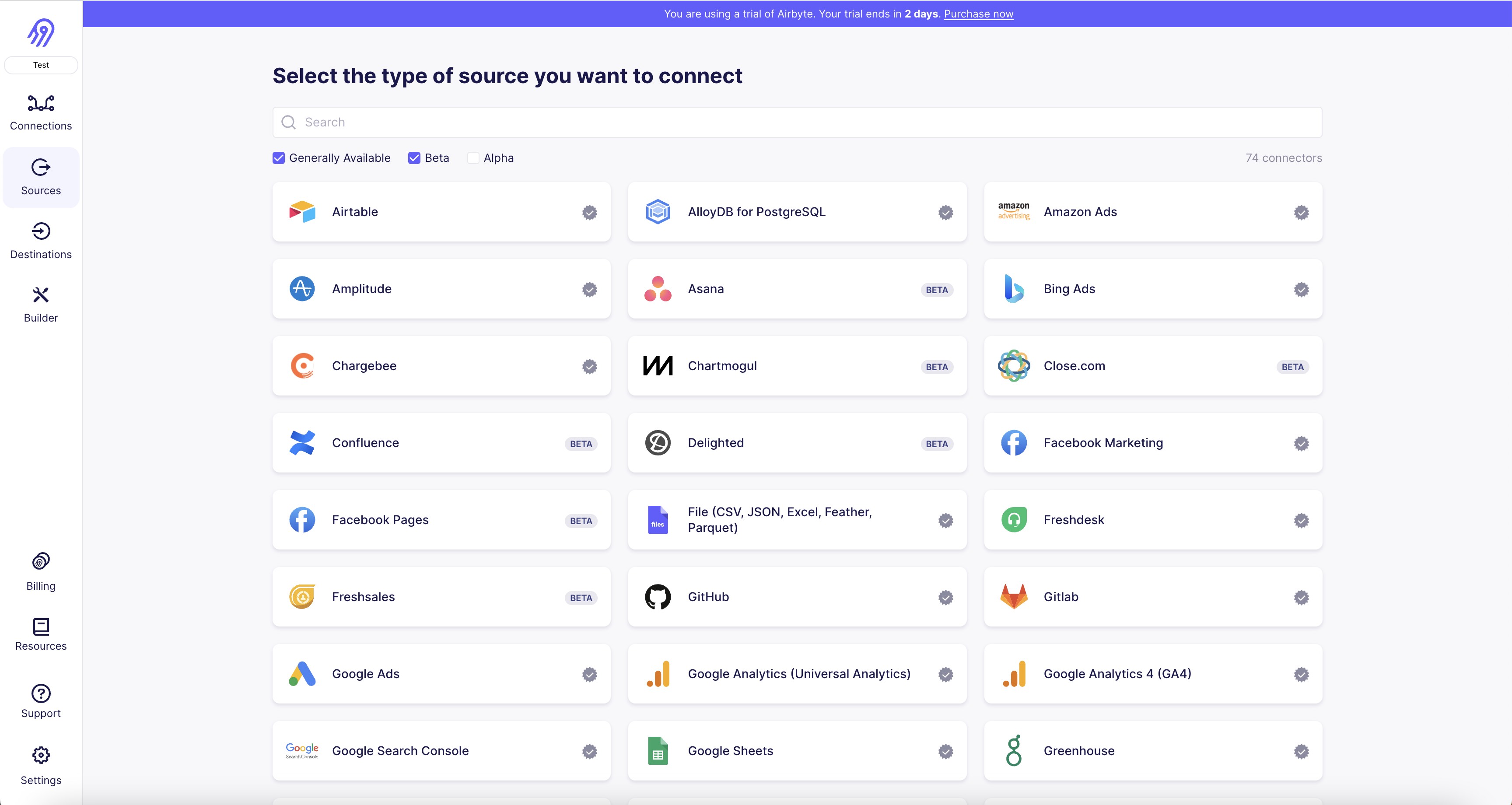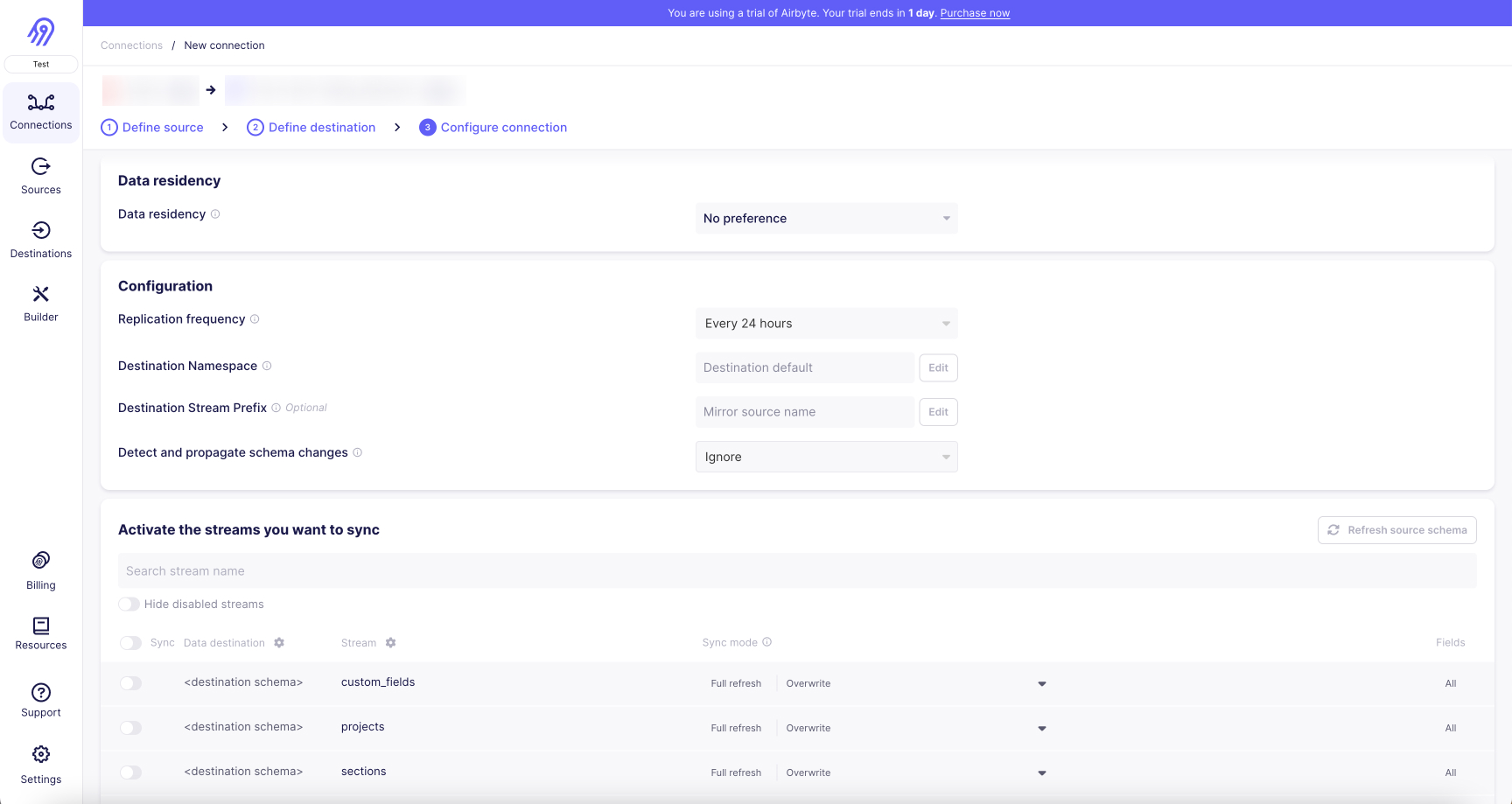Pipedrive is a customer relationship management (CRM) platform built with the needs of the salesperson in mind. The data it provides helps teams and individual salespeople discover their most effective strategies to close deals and make them repeatable. The pipeline delivers detailed, accurate, timely sales reports and revenue projections that help users monitor deals, plan sales events and support financial decisions.
YugabyteDB is the 100% open source cloud native database for mission critical applications.It runs in any public or hybrid cloud. YugabyteDB is also a high-performance, cloud-native, distributed SQL database that aims to support all PostgreSQL features. It is best suited for cloud-native OLTP applications that needs absolute data correctness and need at least one of the following: scalability, high tolerance to failures, or worldwide distributed deployments. The YugabyteDB connector permits moving data from Kafka to YugabyteDB 1.x, and 2.x.

1. Open the Airbyte dashboard and click on "Sources" from the left-hand menu.
2. Click on "Create new source" and select "Pipedrive" from the list of available connectors.
dsa3. Enter a name for your Pipedrive source and click on "Next". 4. Enter your Pipedrive API token in the "API Token" field. You can find your API token in your Pipedrive account settings.
5. Click on "Test connection" to ensure that your credentials are correct and that Airbyte can connect to your Pipedrive account.
6. Once the connection is successful, click on "Next" to configure your sync settings.
7. Select the data you want to sync from Pipedrive, such as deals, contacts, or activities.
8. Choose how often you want Airbyte to sync your data and whether you want to sync all data or only new data since the last sync.
9. Click on "Create source" to save your Pipedrive source and start syncing your data.

1. First, navigate to the YugabyteDB destination connector on Airbyte's website.
2. Click on the "Get Started" button to begin the process.
3. You will be prompted to enter your YugabyteDB connection details, including the host, port, database name, username, and password.
4. Once you have entered your connection details, click on the "Test Connection" button to ensure that your connection is working properly.
5. If your connection is successful, you can then proceed to configure your destination settings, including the table name and schema.
6. Once you have configured your destination settings, click on the "Save" button to save your configuration.
7. You can then run your data integration job to begin transferring data from your source to your YugabyteDB destination.
8. Monitor your data integration job to ensure that it is running smoothly and that your data is being transferred correctly.
9. Once your data integration job is complete, you can then access your data in YugabyteDB and begin analyzing it as needed.

With Airbyte, creating data pipelines take minutes, and the data integration possibilities are endless. Airbyte supports the largest catalog of API tools, databases, and files, among other sources. Airbyte's connectors are open-source, so you can add any custom objects to the connector, or even build a new connector from scratch without any local dev environment or any data engineer within 10 minutes with the no-code connector builder.
We look forward to seeing you make use of it! We invite you to join the conversation on our community Slack Channel, or sign up for our newsletter. You should also check out other Airbyte tutorials, and Airbyte’s content hub!
What should you do next?
Hope you enjoyed the reading. Here are the 3 ways we can help you in your data journey:



What should you do next?
Hope you enjoyed the reading. Here are the 3 ways we can help you in your data journey:



Should you build or buy your data pipelines?
Download our free guide and discover the best approach for your needs, whether it's building your ELT solution in-house or opting for Airbyte Open Source or Airbyte Cloud.

Ready to get started?
Frequently Asked Questions
Pipedrive's API provides access to a wide range of data related to sales and customer relationship management. The following are the categories of data that can be accessed through Pipedrive's API:
1. Deals: Information related to deals such as deal name, deal value, deal stage, deal owner, and deal activities.
2. Contacts: Information related to contacts such as contact name, contact email, contact phone number, and contact activities.
3. Organizations: Information related to organizations such as organization name, organization address, organization phone number, and organization activities.
4. Activities: Information related to activities such as activity type, activity date, activity duration, and activity participants.
5. Users: Information related to users such as user name, user email, user role, and user activities.
6. Products: Information related to products such as product name, product price, product description, and product activities.
7. Pipelines: Information related to pipelines such as pipeline name, pipeline stages, pipeline activities, and pipeline owner.
8. Notes: Information related to notes such as note content, note date, note author, and note activities.
Overall, Pipedrive's API provides access to a comprehensive set of data that can be used to improve sales and customer relationship management processes.

